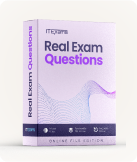ACFE CFE - Financial Transactions and Fraud Schemes - Certified Fraud Examiner - Financial Transactions and Fraud Schemes Exam
Page: 2 / 51
Total 254 questions
Question #6 (Topic: Exam A)
Which of the following is FALSE concerning methods corporate spies generally use to steal information from other organizations?
A. Spies often create counterfeit employee badges to gain entrance into a target company.
B. Spies often gain direct access to a target company by obtaining employment as a security officer or a member of the janitorial crew.
C. When spies use technical surveillance to obtain information about target companies, they gather documentary evidence that can be found through open sources.
D. When spies use social engineering, they manipulate people into handing over secret information through the use of trickery, persuasion, threats, or cajolery.
Answer: A
Question #7 (Topic: Exam A)
Which of the following is an example of a cash larceny scheme?
A. Michael is a cashier at a clothing store. He rings up a fictitious return of a $50 sweater and takes $50 from the cash register.
B. Scott rings a “no sale” transaction at his cash register, opens the drawer, and takes a $100 bill.
C. Anne buys a $500 table from a resale shop. Olive, the cashier, rings up a $400 sale on the register and steals the excess $100.
D. Laura pretends to ring up a sale when Amy makes a purchase, but instead she pockets Amy’s cash and gives her the merchandise without recording the sale.
Answer: A
Question #8 (Topic: Exam A)
Which of the following is NOT one of the information security goals that should be achieved to secure an e-commerce system for uses and account holders?
A. Availability of data
B. Materiality of data
C. Confidentiality of data
D. Integrity of data
Answer: B
Question #9 (Topic: Exam A)
Jones is an accounts payable clerk at Smith Company. He intentionally sent the wrong vendor a check for some supplies. He then called the vendor, explained his “mistake”, and requested that the vendor mail back the check. Jones then intercepted the returned check and deposited it in his own account. What type of scheme did he commit?
A. A shell company scheme
B. A pay and return scheme
C. An altered payee scheme
D. A pass-through scheme
Answer: B
Question #10 (Topic: Exam A)
Which of the following is the MOST ACCURATE statement about the different types of malware?
A. A worm is a type of software that, while not definitely malicious, has a suspicious or potentially unwanted aspect to it.
B. Ransomware is a malicious self-replicating computer program that penetrates operating systems to spread malicious code to other computers.
C. Spyware is software that collects and reports information about a computer user without the user’s knowledge or consent.
D. A Trojan horse is a software program that, while not definitely malicious, monitors and logs the keys pressed on a system’s keyboard.
Answer: C
